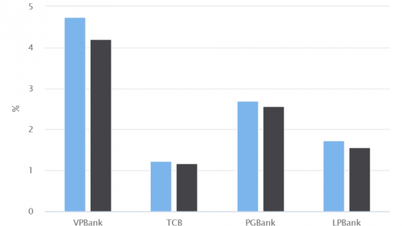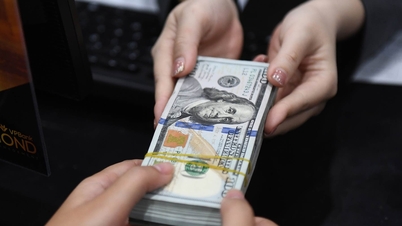25/27 banks recorded an increase in bad debt compared to the beginning of the year, reflecting the general trend of the industry as credit quality declines in the context of a still difficult economy .

According to statistics of Youth Based on the financial reports of 27 listed banks in the second quarter of 2024, the balance bad debt reached nearly 242,000 billion VND by the end of June 2024, an increase of nearly 45,000 billion VND (22%) compared to the end of last year.
Also calculated by ratio (bad debt/total outstanding debt) WiGroup The calculation has reached 2.22% at the end of the second quarter of 2024 - higher than the 2.18% of the first quarter of 2024 and the 1.96% of the fourth quarter of 2023.
How bad debt increases and decreases in banks
Data compiled from the report shows that up to 25/27 bank Bad debt recorded an increase compared to the beginning of the year, reflecting the general trend of the industry that credit quality is declining in the context of the still difficult economy.
In there, In terms of speed alone , Bac A Bank (BAB), VietABank (VAB), LPBank (LPB), Vietinbank (CTG), Vietbank (VBB)... recorded the strongest increase in bad debt.

At Bac A Bank, bad debt reached over VND1,513 billion, up 65.3% compared to the beginning of the year. However, the ratio of bad debt to total outstanding debt of Bac A Bank is still under control at just over 1.4%.
In second place in terms of growth rate, VietABank's bad debt also "jumped" more than 52% compared to the beginning of the year, reaching 1,674 billion VND. The ratio of bad debt to total outstanding debt of this bank is at 1.5%.
Not only small banks, Vietinbank - one of the "Big 4" also witnessed a high increase in bad debt at 48% compared to the beginning of the year, reaching 24,165 billion VND.
Analyzing the quality of Vietinbank's loans, the biggest increase was in the "doubtful debt" group, jumping from VND4,692 billion at the beginning of the year to VND13,421 billion at the end of June. Despite the sharp increase, Vietinbank's bad debt ratio remains at 1.5%.

BIDV - another state-owned giant - also had a bad debt growth rate of more than 38% compared to the beginning of the year, exceeding more than 28,600 billion VND at the end of the second quarter. Or at Vietcombank, the bad debt growth rate is also higher than the industry average.
Also consider bad debt ratio/total outstanding loans , NVB, VPB, BaoVietBank, BVB, VIB, ABB, VBB, OCB, MSB are at the "top" highest in the whole market and are all above 3%. Although exceeding 3%, the positive point is that OCB has a reduced bad debt ratio.
Small banks have a "headache" because of bad debt
Mr. Pham Duy Hung - Director, senior analyst at Visrating - said that the group of small banks has the most obvious decline in asset quality.
NCB, Bac A Bank, SaigonBank, Vietbank... all recorded a higher rate of newly formed problem debt (NPL) than other banks, mainly from the retail and SME (small and medium-sized enterprise) segments, according to Visrating experts.
Among state-owned banks, the problem debt ratio of Vietinbank and BIDV both increased due to sectors related to construction and real estate.
In contrast, Visrating experts commented that some large banks have reduced problem debt by using provisions to handle it. bonds VAMC like VPB case or reduce problem debt from big customers like MBBank.
Meanwhile, TPB's newly formed NPL ratio remained low thanks to tightening lending conditions for new consumer loans.
In conclusion, Visrating experts warned that some small banks will be more vulnerable to liquidity risks due to increased short-term market capital in the context of low deposit growth.
However, banks' asset quality and profitability are expected to remain stable in the second half of 2024 thanks to improving business conditions.
In addition, the low interest rate environment and policy measures to support business activities in various sectors will help increase debt repayment capacity and help reduce delinquencies.
Source












































































































Comment (0)